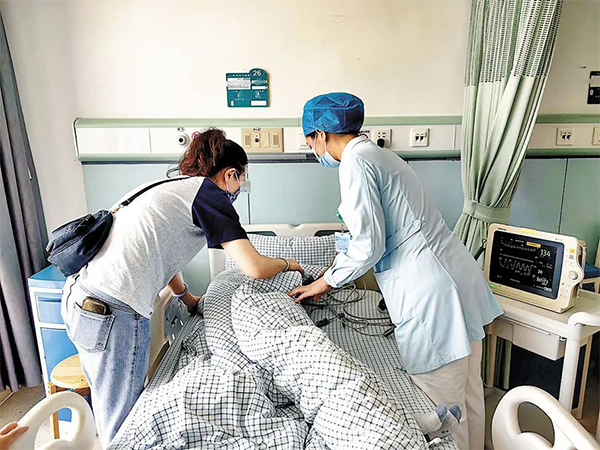 Local News
Local NewsThis year, Shenzhen has gained significant popularity among Hong Kongers as an ideal destination for shopping and dining, thanks to its close proximity to Hong Kong, coupled with a larger range of products and more affordable prices. Moreover, an increasing number of Hong Kongers are visiting Shenzhen for dental services and have been impressed by the convenient reservation processes, excellent hospital environments, quality service and affordable prices here.
Ms. Wong, a Hong Kong resident living in Tsuen Wan, has a 6-year-old son who had previously experienced tooth decay. Later he developed mouth ulcers that caused persistent pain. “Due to my child’s special condition, he required general anesthesia but in Hong Kong it’s impossible to complete the treatment at the clinic in a short period of time after a series of procedures,” said Wong. “Since we would have to wait at least a month, we finally decided to have my child receive treatment in Shenzhen and it turned out to be a very wise decision,” she said.

Ms. Wong from Hong Kong takes care of her son at Southern Medical University Shenzhen Stomatology Hospital (Pingshan). Photos from Pingshan Release
Wong’s family took a high-speed train from Hong Kong West Kowloon Station to Pingshan Station. Then, they took a taxi and arrived at the Southern Medical University Shenzhen Stomatology Hospital (Pingshan) in just 10 minutes. “The hospital arranged a staffer to accompany us, and the outpatient waiting area was not crowded or noisy. The environment was very comfortable. When my child struggled during the blood draw, the nurse displayed excellent skills and a gentle attitude, which made us very satisfied. My child is in good condition now, and the doctor said he could be discharged at 5 p.m. Now we will go back to Hong Kong soon,” said Wong.
Dr. Xu Wen’an, head of the Pediatric Dentistry Department and Medical Affairs at the Southern Medical University Shenzhen Stomatology Hospital (Pingshan), said children’s dental treatment needs to be approached meticulously, taking into account every detail.
“In our pediatric dentistry department, our goal is to create a dental clinic without crying. We focus on providing psychological comfort before starting the dental procedure. Our dental chairs are equipped with multimedia content, allowing children to watch cartoons during treatment,” he said. “In the waiting area, we also have caring nurses who provide health education, enabling children to acquire more knowledge about oral health while receiving treatment. We employ internationally advanced, comfortable, and painless treatment techniques, particularly suitable for children with special needs and for those who experience dental phobia,” he added.

The comfortable environment at Southern Medical University Shenzhen Stomatology Hospital (Pingshan).
The Chinese mainland has rolled out centralized procurement policies for dental implants, which makes the prices affordable, and the procurement catalog also includes leading brands from Europe, the U.S., Japan and South Korea, ensuring similar quality to Hong Kong dental services. Additionally, orthodontic treatment and other dental procedures on the mainland are also cost-effective, which are favored by Hong Kongers.
Ms. Yeung, a resident of Tseung Kwan O, acclaimed that dentists at the Southern Medical University Shenzhen Stomatology Hospital (Pingshan) are highly experienced and the hospital boasts state-of-the-art equipment imported from Europe and the U.S., reaching international standards.
As a public hospital, the hospital offers services at government-specified prices. From basic dental fillings and extractions to dental crowns and dental implants, the prices are approximately one-third to one-fifth of those in Hong Kong, providing a significant advantage. Furthermore, patients undergoing lengthy treatments such as orthodontics and dental implants can make installment payments, easing their financial burden.

Southern Medical University Shenzhen Stomatology Hospital (Pingshan)
Since the number of Hong Kongers seeking medical treatment at the hospital has increased by 50%, the hospital has conducted staff training in Cantonese, Japanese and English reception skills. “In the public hospitals in Hong Kong, the waiting time for an appointment can range from four to six weeks. Our hospital operates on a fully appointment-based system, with routine appointments typically available within a week. Once a patient completes their initial appointment, they can directly schedule follow-up visits with the doctor without any concerns about registering for subsequent appointments. Additionally, in cases of emergency, we have implemented a green channel to provide priority treatment on the same day,” said Xu.